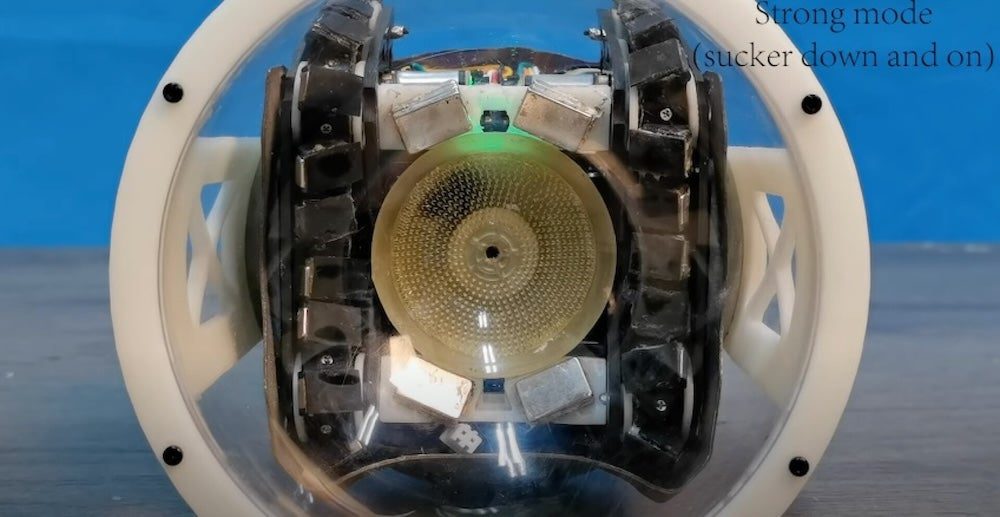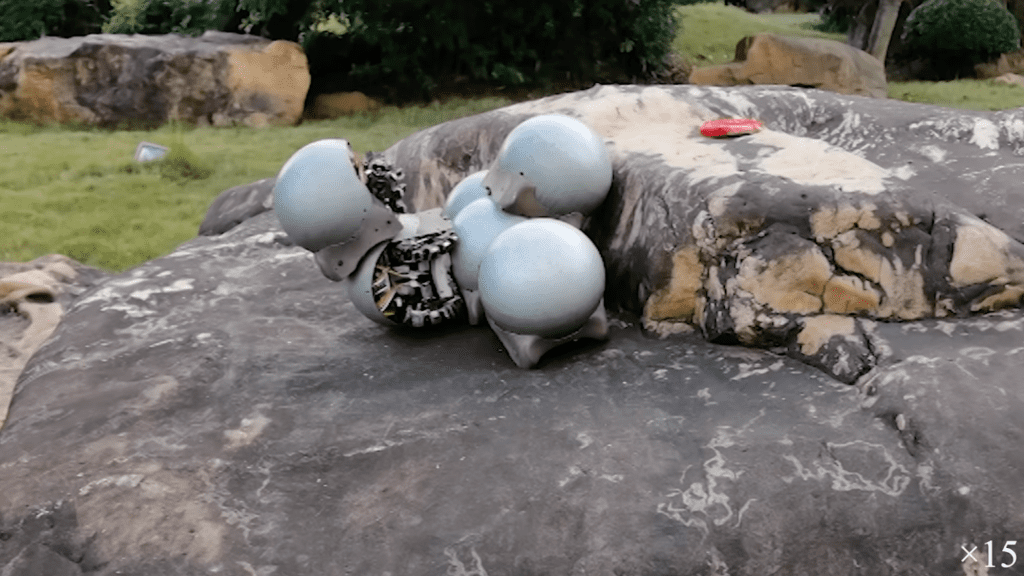Scientists have constructed a group of tiny, snail-inspired robots without the mucus. Instead, a retractable suction cup works together with the remote-controlled machine’s tank-like treads to move across tough terrain and over each other.
Biomimicry This is not a new concept in robotics. However, while many aquatic and flying examples can move through three-dimensional environments, that is often not the case for robots limited to walking, crawling, or rolling along the ground. To find a potential solution, roboticists at the Chinese University of Hong Kong took inspiration from shelled gastropods for their design.
The outcome, recently described in Nature Communications, is a group of snailbots that can work together when a situation becomes too challenging for a single robot. Each rubber tread system contains small magnets, above which the electronics, battery, microprocessor, and other components are housed within a custom metal “helmet.” When in “free mode,” the robots move across a surface similar to a traditional tank or bulldozer. But when faced with tough conditions and it’s time to switch roles, the team activates their snail bot’s “strong mode.”
Why animals run faster than their robot counterparts… for now ]
Due to the angle of each machine’s magnetic tread chain, each snail bot can climb on top of another robot’s metal shell. Once in place, a human controller activates “strong mode” to use the top bot’s vacuum-suction cup on the shell below it. This anchors the robot, allowing the whole team of robots to repeat the process as needed. As a bonus, the robots can rotate 360 degrees while the suction cup remains attached. In test runs, the robots successfully built staircases to clear ledges, constructed bridges to cross gaps like army ants, and even formed a single, extended robot arm.

“The focus on the single robot’s field mobility ensures the overall system’s flexibility and agility,” the team stated in their paper. “Additionally, the inclusion of a sturdy connection mechanism is crucial to ensure that when the robot group comes together as a united unit, it achieves increased strength.”
Boston Dynamics gives Spot bot a furry makeover.]
Researchers believe that the underlying principles of their new design could be used to deploy similar robots in real-life scenarios such as search-and-rescue missions and other potentially hazardous environments. There might even be a time when we see space snailbots exploring asteroids, moons, or other planets. Before that, though, designers plan to develop new versions that are entirely independent, enabling them to communicate, plan, and build with each other.









